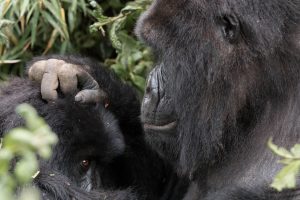Why is packing properly important for the Great Migration safari?
Packing correctly for the Great Migration safari ensures comfort, safety, and an enjoyable experience in the African wilderness. The Great Migration spans Tanzania’s Serengeti and Kenya’s Masai Mara, where travelers encounter diverse climates, bumpy game drives, and long days outdoors. Proper packing helps travelers prepare for dusty plains, chilly mornings, and sunny afternoons. It also ensures they carry essential safari gear, travel documents, and health supplies. Organized packing prevents last-minute stress and allows visitors to focus fully on the once-in-a-lifetime spectacle of millions of wildebeests, zebras, and gazelles moving across the savannah. What to Pack for the Great Migration Safari
What clothing should you pack for the Great Migration?
Pack lightweight, neutral-colored clothing such as khaki, beige, brown, or olive green. These colors blend with the natural environment and minimize disturbance to wildlife. Avoid bright colors, which may attract insects, and camouflage prints, which some countries restrict. Long-sleeved shirts and trousers protect against sunburn, scratches, and insect bites. A light jacket or fleece is essential for chilly mornings and evenings, especially during game drives. Include a wide-brimmed hat and a pair of sunglasses for sun protection. Comfortable, breathable fabrics ensure you remain cool during hot afternoons while maintaining adequate coverage. What to Pack for the Great Migration Safari
Do you need special footwear for the Great Migration safari?
Yes, footwear plays a crucial role on safari. Pack sturdy, comfortable walking shoes or hiking boots for bush walks and nature treks. They should offer ankle support and grip for uneven terrain. For game drives, comfortable closed shoes such as sneakers are sufficient. Sandals or flip-flops are useful for relaxing at the lodge or camp. Ensure shoes are well broken in before the trip to prevent blisters. Because mornings can be damp, waterproof shoes or quick-drying options add extra comfort.
Should you bring layers for morning and evening game drives?
Yes, layers are essential for morning and evening game drives during the Great Migration. Temperatures often drop in the early morning and rise quickly during the day. Start with a light base layer, add a fleece or sweater, and top with a windproof or waterproof jacket if needed. Layering allows you to adjust clothing as the temperature changes. A scarf, gloves, and beanie may be necessary during colder months, particularly in the Masai Mara and Serengeti’s open plains. Packing layers guarantees comfort and flexibility throughout the day.
What essential safari gear should you pack?
Pack essential safari gear to enhance your wildlife viewing experience. Binoculars are critical for observing distant herds, predators, and birdlife. A good-quality camera with extra memory cards and batteries helps capture unforgettable moments. A flashlight or headlamp is useful around camps and lodges, especially in areas without strong lighting. A reusable water bottle keeps you hydrated during long drives. Consider carrying a power bank or portable solar charger to keep electronic devices charged. A small daypack helps carry personal items, snacks, and gear during excursions.
Should you pack insect repellent and sun protection?
Yes, insect repellent and sun protection are mandatory for the Great Migration safari. Mosquitoes and tsetse flies are common in some areas, so use repellent containing DEET or other effective ingredients. Carry sunscreen with SPF 30 or higher to shield your skin from strong equatorial sun. A lip balm with SPF prevents dryness and sun damage. Sunglasses with UV protection protect your eyes, while a wide-brimmed hat offers additional shade. These items safeguard against discomfort and health risks, making them indispensable in your packing list.
What travel documents do you need for the Great Migration?
Carry valid travel documents to ensure a smooth safari experience. A valid passport with at least six months’ validity is essential. Depending on your nationality, you may need a visa for Kenya, Tanzania, or both. Check entry requirements in advance to avoid delays. Carry a printed copy of your safari itinerary, accommodation details, and booking confirmations. Travel insurance that covers medical emergencies, evacuation, and trip cancellations is strongly recommended. Keep documents in a waterproof pouch or organizer to protect them from dust and moisture.
Do you need vaccinations and medical supplies for the trip?
Yes, vaccinations and medical supplies are critical for safari travel. Yellow fever vaccination may be required for entry into both Kenya and Tanzania. Recommended vaccinations include hepatitis A, hepatitis B, typhoid, and tetanus. Malaria prophylaxis is strongly advised, as the Great Migration passes through malaria-prone areas. Carry a personal medical kit containing prescription medications, pain relievers, antihistamines, antiseptic wipes, and bandages. Motion sickness tablets may be helpful during bumpy game drives. Consult a travel clinic before departure to confirm specific requirements for your itinerary.
Should you pack snacks and reusable items for the safari?
Yes, snacks and reusable items enhance comfort on long game drives. Energy bars, nuts, and dried fruit provide quick energy between meals. A reusable water bottle reduces plastic waste and keeps you hydrated throughout the day. Many lodges and safari operators provide packed meals or refreshments, but carrying personal snacks ensures you stay energized. Reusable cutlery and eco-friendly straws are optional but support sustainable travel practices. Lightweight, resealable bags help organize snacks and prevent spills.
Do you need luggage restrictions for safari vehicles?
Yes, most safari operators enforce luggage restrictions due to limited space in safari vehicles and small aircraft. Soft-sided duffel bags are preferred over hard-shell suitcases, as they fit easily into vehicle compartments. The standard weight allowance for safari flights ranges between 15 to 20 kilograms (33–44 pounds), including carry-on bags. Keep valuables, electronics, and travel documents in your hand luggage. Confirm luggage policies with your operator in advance to avoid extra charges or complications.
What electronic devices should you carry?
Carry essential electronic devices to document your safari and stay connected. A good-quality camera with zoom lenses is crucial for wildlife photography. Smartphones are useful for photos, navigation, and communication. Power banks, spare batteries, and extra memory cards are necessary to keep devices functional throughout the trip. A universal travel adapter ensures compatibility with power outlets in Kenya and Tanzania. Portable solar chargers are valuable in remote areas with limited electricity access. Pack electronic gear in padded cases to protect them from dust and bumps.
Should you bring safari-friendly accessories?
Yes, safari-friendly accessories improve convenience and comfort. A lightweight scarf or bandana protects against dust on game drives. A pair of binoculars enhances wildlife viewing. A field guidebook on East African wildlife helps identify animals and enriches the safari experience. Wet wipes and hand sanitizer keep you refreshed in the bush. A compact travel pillow adds comfort during long transfers. Accessories may seem small, but they significantly improve the overall safari experience. What to Pack for the Great Migration Safari
Do you need swimwear during the Great Migration safari?
Yes, pack swimwear because many lodges and camps in the Serengeti and Masai Mara feature swimming pools. Pools offer relaxation after long game drives and provide stunning views of the savannah. Swimwear also comes in handy if you plan to extend your safari with a beach holiday in Zanzibar, Mombasa, or Lake Victoria. Carry a lightweight towel for quick drying if your accommodation does not provide one.
Should you pack clothing for cultural visits?
Yes, modest clothing is essential for cultural visits to Maasai or local communities near the reserves. Women should wear skirts or trousers that cover the knees and tops that cover the shoulders. Men should avoid sleeveless shirts during cultural tours. Respectful dress fosters positive interactions and shows appreciation for local traditions. Carrying a small gift such as school supplies or food items, when appropriate, may also enhance community visits. What to Pack for the Great Migration Safari
Can you pack light while still being prepared?
Yes, packing light while staying prepared is possible with careful planning. Choose versatile clothing that you can layer and mix for different occasions. Limit footwear to essential pairs for walking, game drives, and relaxation. Carry multi-use accessories such as scarves and jackets. Focus on quality over quantity, ensuring every item serves a purpose. A well-curated packing list reduces luggage stress and makes travel more enjoyable. What to Pack for the Great Migration Safari




